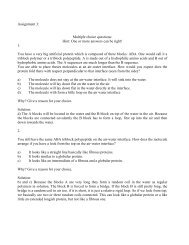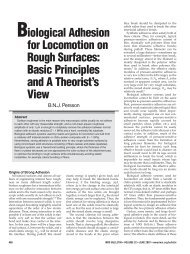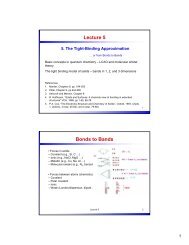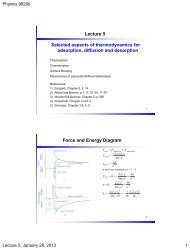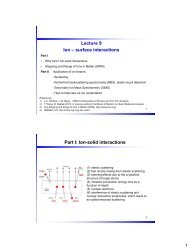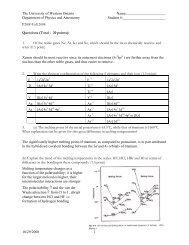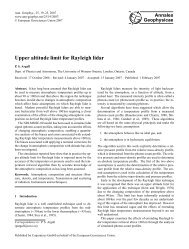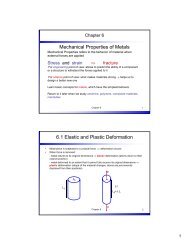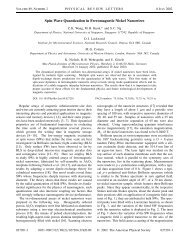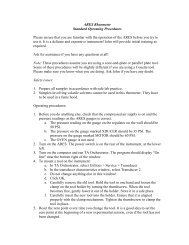P259E Laboratory Manual
P259E Laboratory Manual
P259E Laboratory Manual
Create successful ePaper yourself
Turn your PDF publications into a flip-book with our unique Google optimized e-Paper software.
Varying the “trigger level” causes the trace to move back and forth within the screen,because you are varying the “reference value” V t . Another way to say this is that varying V tshifts the phase of the waveform that you see.In the example that we have discussed, the trigger is provided by the waveform under study.This is known as INTERNAL triggering. Sometimes, especially if you are looking at a noisysignal, it can be convenient to trigger from another pulse which is known to have the sameperiod as the pulse under investigation, but is less noisy. In this case the “clean” signal is fedinto the EXTERNAL TRIGGER of the SCOPE, and the trigger setting is set to EXTERNAL.The reference signal is often chosen to be a square wave, so it produces a sharp, clean triggere.g. a square wave, as shown below.Figure 10. Square wave.The input of the scope is designed so that it has very little effect on the circuit being probed.A typical input resistance might be 10 7 Ω. A typical input capacitance might be 30 pF inparallel with the resistance. (1 pF =1 × 10 −12 Farads )Experiment:• 1 Oscilloscope• 2 Oscilloscope Probes• 1 Function Generator• 1 “Mystery Box” which produces various waveforms• 1 Fluke 8010A Digital Volt Meter• 1 box miscellaneous solid wire pieces, stripped at both ends (Plastic box kits)1. For each setting of the “mystery box” provided, display the output signal on theoscilloscope. Sketch the waveform, and include a complete description of the structure.Note its amplitude, frequency and any other parameters which you think might be importante.g. pulse width etc.2. Use the function generator to produce a sine wave of frequency ~1000 Hz, and use theoscilloscope to adjust its amplitude to 2 volts peak-to-peak. Demonstrate the ability tomeasure the amplitude and the frequency by two methods: (1) using the parametermeasurements built into the scope, and (2) measuring directly from the screen display of thewaveform.6




